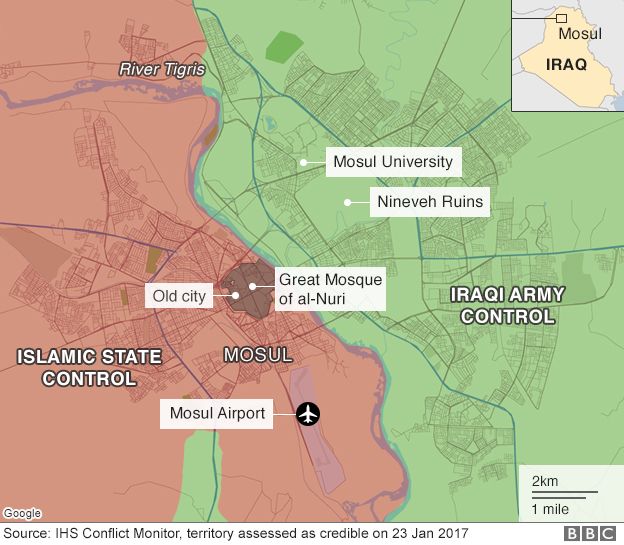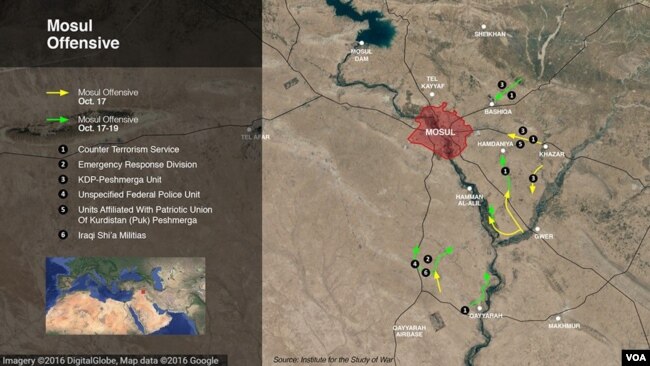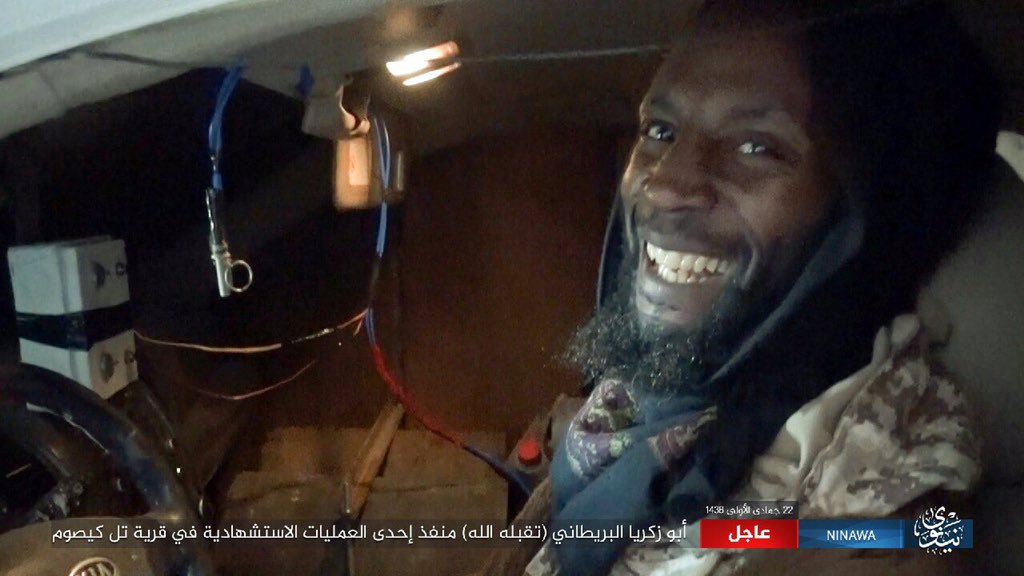(255) 1-28-2017-to-02-03-2017_____****THE****WINDS****of****WAR****
http://www.timebomb2000.com/vb/show...03-2017_____****THE****WINDS****of****WAR****
(256) 2-04-2017-to-02-10-2017_____****THE****WINDS****of****WAR****
http://www.timebomb2000.com/vb/show...10-2017_____****THE****WINDS****of****WAR****
(257) 2-11-2017-to-02-17-2017_____****THE****WINDS****of****WAR****
http://www.timebomb2000.com/vb/show...17-2017_____****THE****WINDS****of****WAR****
----------
For links see article source.....
Posted for fair use.....
https://www.strategypage.com/qnd/mali/20170216.aspx
Mali: Sahel Coalition Formed
February 16, 2017: Mali, Chad, Niger and the Ivory Coast, Burkina Faso have agreed to form a new “G5 counter-terrorism force” that will work in cooperation with the similar (but larger and better equipped) French force that has been operating in the Sahel (the semi-desert area south of the desert that stretches across northern Africa) since 2014. Back then the French concluded that the Sahel was still troubled by thousands of Islamic terrorists and that this situation could not be taken care of quickly. In order to maintain pressure on the Islamic terrorists France established a special force of 3,000 troops to fight Islamic terrorists throughout the Sahel (actually just Mauritania, Mali, Niger, Chad and Burkina Faso). Since then the French force has grown to some 4,000 troops equipped with 200 armored vehicles, 20 transport and attack helicopters, six jet fighters and three large UAVs. There are also two twin engine C-160 air transports available for use within the Sahel. Supplies and reinforcements are regularly flown in using long-range transports (like the C-17) belonging to NATO allies (especially the U.S. and Britain). From the beginning the French force included a thousand French troops in Mali and the rest dispersed to other Sahel bases and ready to quickly move anywhere in the region that Islamic terrorist activity had been detected. The G5 nations already cooperated by sharing intelligence and providing quick access to their territory by the French force. In addition the Americans provided satellite and UAV surveillance and other intel services (especially analysis and access to nearly all American data on Islamic terrorist activities in the region).
All this was meant to keep the Islamic terrorists in the Sahel weak and disorganized. So far that has worked, but AQIM (Al Qaeda in the Islamic Maghreb), which has been around since 2007, is still in business (as gangsters smuggling drugs and illegal migrants north) and getting support from Islamic terrorists in Europe and the Persian Gulf. Islamic terrorists continue to carry out attacks in Mali (mainly the north) and in the G5 states to let the world know that Islamic terrorists were still present in the area.
Another reminder has been the high casualty rate among peacekeepers in Mali. UN peacekeepers in Mali suffered 26 dead during 2016, the highest number of any UN peacekeeping operation and 90 percent of the UN peacekeeper deaths in 2016, even though the Mali force comprises less than 15 percent of all UN peacekeepers. The Mali peacekeepers have been in this situation for three years in a row. Over a hundred peacekeepers (mostly UN, but some French) have died in Mali since they arrived in 2013. This is the highest casualty rate of all current UN peacekeeping operations.
The new G5 forces will be small (500-2,000 personnel) and consist largely of special operations troops. Many of these troops have already worked with their French counterparts or been trained by French or American special operations advisors.
February 14, 2017: In the north (outside Kidal) French soldiers, acting on a tip, found and destroyed a cache of 25 mortar shells that were recently placed there for a planned (according to locals) attack sometime in the next few days. Similar tips by locals have led to the recent disabling of three roadside bombs.
February 13, 2017: In central Mali (near the junction of the Niger and Bani rivers) there was another outbreak of violence over the weekend involving Peul (Fulani) and Bambara tribesmen. It began when some Bambara attacked a Peul village and killed as many as 30 people and wounded many more. More than 500 villagers fled their homes to avoid the violence. This tribal feuding has been going on for years but got worse since 2015 when the Peul became widely known as a source of recruits for Islamic terrorist groups and for generally supporting AQIM. The more numerous Bambara (who tend to be pro-government) live north of the Niger and are about a third of the population. The Fulani (who tend to be more rebellious) are largely from south of the Niger. This is not just a Mali problem as Nigeria complains that armed Fulani herders from Mali have showed up in northeast Nigeria and joined local Islamic terrorist groups.
February 12, 2017: Algeria and Mali have agreed to allow Algerian telecommunications companies to offer Internet and cell phone services in Mali.
February 10, 2017: In the north (near Gao) German peacekeepers now have all three of their leased Israeli Heron I UAVs (similar to the American Predator) operational. The first Heron 1 arrived in October 2016 and its initial mission lasted nearly six hours. Peacekeepers in Mali have found Israeli UAVs very useful for keeping an eye on large, thinly inhabited, areas. The first one found there were no serious problems operating in the Mali desert-like conditions.
February 7, 2017: In the south (300 kilometers east of the capital near the Burkina Faso border) four armed men kidnapped a Catholic nun (from Colombia) who provided health care from a clinic in a parish compound. At first it was feared the kidnappers were Islamic terrorists, who prefer to attack non-Moslems (especially clergy) and kidnap foreigners. The four men claimed to be Islamic terrorists. Police concluded (based on testimony of the other three nuns in the compound) that the attackers were probably just common criminals. The other nuns were not killed by the armed men but rather locked up in a closet as the compound was looted of all valuables and the attackers left with the one nun. The getaway car was later found abandoned. Since then the police have arrested at least twenty people in the area, killing one of them in the process. There has not yet been a ransom demand and it is feared that the criminals plan to sell their captive to Islamic terrorists, who often buy such captives from criminals. That’s because the criminals don’t want the long term problems with police because they made the country look bad by kidnapping a foreigner. The Islamic terrorists, on the other hand, seek that kind of attention and generally can obtain a much higher ransom, or die trying.
January 26, 2017: In the south police arrested two men suspected of being Islamic terrorists who planned an attack in the capital (Bamako). The two were caught with weapons and equipment needed for such an attack, which was cancelled because the heavily guarded international conference on January 13-14 proved impossible for the attackers to get at. Rather than try anyway the Islamic terrorists decided to remain hidden and wait for another opportunity. But police did hear about the plan and began looking for the participants.
The German parliament approved the expansion of the German peacekeeper contingent in Mali from 650 to a thousand. Also approved was the use of eight German military helicopters (four NH90 transports and four Tiger gunships.) While Germany also has troops in Iraq and Afghanistan (as trainers and advisors) but the largest contingent is in Mali.
January 25, 2017: French counter-terrorism forces in the north have arrested three suspects believed to be involved with the January 18th suicide truck bomb attack outside Gao that killed 77 and wounded over a hundred, most of the casualties were members of pro-government Tuareg militias that AQIM later said were being punished for making peace with the foreign infidels (non-Moslems).
January 23, 2017: In the north (outside Kidal) Islamic terrorists fired several mortar shells at a peacekeeper base a killed a soldier from Chad and wounded two others.....
Archives
Latest
Most Read
ELECTRONIC WEAPONS: China Builds Its Way Into The Big Leagues
NIGERIA: Putting The Problems Into Perspective
LEADERSHIP: Ubi Solitudinem Faciunt Pacem Appellant
PHOTO: Abrams Has Poland's Back
BOOK REVIEW: Titan: The Art of British Power in the Age of Revolution and Napoleon
MALI: Sahel Coalition Formed
ARTILLERY: Sweden Will Stop Them On The Beaches
SPECIAL OPERATIONS: Russia Joins The Night Stalker Fan Club
ON POINT: A Renaissance for Small Aircraft Carriers?
PHOTO: Golden Dragon Guards BONE
PHILIPPINES: New Opportunities
WARPLANES: Spy/Ranger Learns From The Past
NAVAL AIR: Prince Potemkin Would Approve
http://www.timebomb2000.com/vb/show...03-2017_____****THE****WINDS****of****WAR****
(256) 2-04-2017-to-02-10-2017_____****THE****WINDS****of****WAR****
http://www.timebomb2000.com/vb/show...10-2017_____****THE****WINDS****of****WAR****
(257) 2-11-2017-to-02-17-2017_____****THE****WINDS****of****WAR****
http://www.timebomb2000.com/vb/show...17-2017_____****THE****WINDS****of****WAR****
----------
For links see article source.....
Posted for fair use.....
https://www.strategypage.com/qnd/mali/20170216.aspx
Mali: Sahel Coalition Formed
February 16, 2017: Mali, Chad, Niger and the Ivory Coast, Burkina Faso have agreed to form a new “G5 counter-terrorism force” that will work in cooperation with the similar (but larger and better equipped) French force that has been operating in the Sahel (the semi-desert area south of the desert that stretches across northern Africa) since 2014. Back then the French concluded that the Sahel was still troubled by thousands of Islamic terrorists and that this situation could not be taken care of quickly. In order to maintain pressure on the Islamic terrorists France established a special force of 3,000 troops to fight Islamic terrorists throughout the Sahel (actually just Mauritania, Mali, Niger, Chad and Burkina Faso). Since then the French force has grown to some 4,000 troops equipped with 200 armored vehicles, 20 transport and attack helicopters, six jet fighters and three large UAVs. There are also two twin engine C-160 air transports available for use within the Sahel. Supplies and reinforcements are regularly flown in using long-range transports (like the C-17) belonging to NATO allies (especially the U.S. and Britain). From the beginning the French force included a thousand French troops in Mali and the rest dispersed to other Sahel bases and ready to quickly move anywhere in the region that Islamic terrorist activity had been detected. The G5 nations already cooperated by sharing intelligence and providing quick access to their territory by the French force. In addition the Americans provided satellite and UAV surveillance and other intel services (especially analysis and access to nearly all American data on Islamic terrorist activities in the region).
All this was meant to keep the Islamic terrorists in the Sahel weak and disorganized. So far that has worked, but AQIM (Al Qaeda in the Islamic Maghreb), which has been around since 2007, is still in business (as gangsters smuggling drugs and illegal migrants north) and getting support from Islamic terrorists in Europe and the Persian Gulf. Islamic terrorists continue to carry out attacks in Mali (mainly the north) and in the G5 states to let the world know that Islamic terrorists were still present in the area.
Another reminder has been the high casualty rate among peacekeepers in Mali. UN peacekeepers in Mali suffered 26 dead during 2016, the highest number of any UN peacekeeping operation and 90 percent of the UN peacekeeper deaths in 2016, even though the Mali force comprises less than 15 percent of all UN peacekeepers. The Mali peacekeepers have been in this situation for three years in a row. Over a hundred peacekeepers (mostly UN, but some French) have died in Mali since they arrived in 2013. This is the highest casualty rate of all current UN peacekeeping operations.
The new G5 forces will be small (500-2,000 personnel) and consist largely of special operations troops. Many of these troops have already worked with their French counterparts or been trained by French or American special operations advisors.
February 14, 2017: In the north (outside Kidal) French soldiers, acting on a tip, found and destroyed a cache of 25 mortar shells that were recently placed there for a planned (according to locals) attack sometime in the next few days. Similar tips by locals have led to the recent disabling of three roadside bombs.
February 13, 2017: In central Mali (near the junction of the Niger and Bani rivers) there was another outbreak of violence over the weekend involving Peul (Fulani) and Bambara tribesmen. It began when some Bambara attacked a Peul village and killed as many as 30 people and wounded many more. More than 500 villagers fled their homes to avoid the violence. This tribal feuding has been going on for years but got worse since 2015 when the Peul became widely known as a source of recruits for Islamic terrorist groups and for generally supporting AQIM. The more numerous Bambara (who tend to be pro-government) live north of the Niger and are about a third of the population. The Fulani (who tend to be more rebellious) are largely from south of the Niger. This is not just a Mali problem as Nigeria complains that armed Fulani herders from Mali have showed up in northeast Nigeria and joined local Islamic terrorist groups.
February 12, 2017: Algeria and Mali have agreed to allow Algerian telecommunications companies to offer Internet and cell phone services in Mali.
February 10, 2017: In the north (near Gao) German peacekeepers now have all three of their leased Israeli Heron I UAVs (similar to the American Predator) operational. The first Heron 1 arrived in October 2016 and its initial mission lasted nearly six hours. Peacekeepers in Mali have found Israeli UAVs very useful for keeping an eye on large, thinly inhabited, areas. The first one found there were no serious problems operating in the Mali desert-like conditions.
February 7, 2017: In the south (300 kilometers east of the capital near the Burkina Faso border) four armed men kidnapped a Catholic nun (from Colombia) who provided health care from a clinic in a parish compound. At first it was feared the kidnappers were Islamic terrorists, who prefer to attack non-Moslems (especially clergy) and kidnap foreigners. The four men claimed to be Islamic terrorists. Police concluded (based on testimony of the other three nuns in the compound) that the attackers were probably just common criminals. The other nuns were not killed by the armed men but rather locked up in a closet as the compound was looted of all valuables and the attackers left with the one nun. The getaway car was later found abandoned. Since then the police have arrested at least twenty people in the area, killing one of them in the process. There has not yet been a ransom demand and it is feared that the criminals plan to sell their captive to Islamic terrorists, who often buy such captives from criminals. That’s because the criminals don’t want the long term problems with police because they made the country look bad by kidnapping a foreigner. The Islamic terrorists, on the other hand, seek that kind of attention and generally can obtain a much higher ransom, or die trying.
January 26, 2017: In the south police arrested two men suspected of being Islamic terrorists who planned an attack in the capital (Bamako). The two were caught with weapons and equipment needed for such an attack, which was cancelled because the heavily guarded international conference on January 13-14 proved impossible for the attackers to get at. Rather than try anyway the Islamic terrorists decided to remain hidden and wait for another opportunity. But police did hear about the plan and began looking for the participants.
The German parliament approved the expansion of the German peacekeeper contingent in Mali from 650 to a thousand. Also approved was the use of eight German military helicopters (four NH90 transports and four Tiger gunships.) While Germany also has troops in Iraq and Afghanistan (as trainers and advisors) but the largest contingent is in Mali.
January 25, 2017: French counter-terrorism forces in the north have arrested three suspects believed to be involved with the January 18th suicide truck bomb attack outside Gao that killed 77 and wounded over a hundred, most of the casualties were members of pro-government Tuareg militias that AQIM later said were being punished for making peace with the foreign infidels (non-Moslems).
January 23, 2017: In the north (outside Kidal) Islamic terrorists fired several mortar shells at a peacekeeper base a killed a soldier from Chad and wounded two others.....
Archives
Latest
Most Read
ELECTRONIC WEAPONS: China Builds Its Way Into The Big Leagues
NIGERIA: Putting The Problems Into Perspective
LEADERSHIP: Ubi Solitudinem Faciunt Pacem Appellant
PHOTO: Abrams Has Poland's Back
BOOK REVIEW: Titan: The Art of British Power in the Age of Revolution and Napoleon
MALI: Sahel Coalition Formed
ARTILLERY: Sweden Will Stop Them On The Beaches
SPECIAL OPERATIONS: Russia Joins The Night Stalker Fan Club
ON POINT: A Renaissance for Small Aircraft Carriers?
PHOTO: Golden Dragon Guards BONE
PHILIPPINES: New Opportunities
WARPLANES: Spy/Ranger Learns From The Past
NAVAL AIR: Prince Potemkin Would Approve







